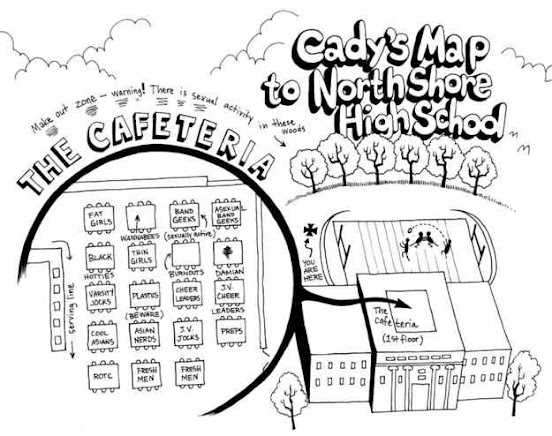Unctuous (pronounced uhngk-choo-uhs)
(1) Characterized
by excessive piousness or moralistic fervor, especially in an affected manner;
excessively smooth, suave, or smug; one who affects an oily charm; profusely
polite, especially unpleasantly so and insincerely earnest.
(2) Of
the nature of or characteristic of an unguent or ointment; oily; greasy.
(3) In
mining, a mineral having an oily or soapy feel.
(4) Of
a liquid or substance, oily or greasy.
(5) Of
food and beverage (applied typically to wine, coffee, sauce, gravy etc), rich,
lush, intense, with layers of concentrated, soft, velvety flavor (a use with a
positive association).
1350-1400:
From the Middle English, from the Old French unctuous
(oily, having a greasy or soapy feeling when touched), from the Medieval Latin ūnctuōsus (oily; greasy) from unctus (act of anointing), from the past
participle stem of unguere (to anoint). The most familiar form appears to have been unctum (ointment). The literal meanings
endured for centuries and are still used today in specialist medical and
geological texts but the figurative sense of "blandly ingratiating" dates
from 1742, perhaps in part with a literal sense, but more in the sarcastic sense drawn from unction in the sense of "deep spiritual feeling" (a meaning in use since the 1690s, the idea of having been anointed in the rite of unction). Unctuous has also been favored by food
critics, comprising the sense of something pleasingly juicy with the more
abstract notion of a food which seems “anxious to please”. The spelling (as an adjective) unctious was
used between circa 1600 and the 1720s. Unctuous is an adjective, unctuousness & unctuosity are nouns, unctuously is an adverb; the noun plural is unctuosities. The form "ununctuous" (not unctuous) seems to be used (1) of food or substances and (2) of people usually unctuous not being so (those of the "kiss-up, kick-down" type said to switch between their "unctuous" & "ununctuous" modes depending on the dynamic of the power-relationship).
Uriah Heep, very ’umble
Literature’s archetype of the unctuous is Charles Dickens' (1812–1870) Uriah Heep from the novel David Copperfield (1849-1850) Heap is famous for his cloying humility, obsequiousness, insincerity and frequent references to his own "'umbleness"; his name has become synonymous with being a sycophant. With plenty of time to contemplate the past while serving the twenty year sentence he was lucky to receive for war crimes and crimes against humanity, Albert Speer (1905–1981; Nazi court architect 1934-1942; Nazi minister of armaments and war production 1942-1945, recalling a former subordinate, noted the type in his prison diaries Spandauer Tagebücher (Spandau: The Secret Diaries (1975)), musing it was the combination of fawning obedience and dynamism in its functionaries on which totalitarian states depended for their success.
The characteristics of grasping manipulation and insincerity render Uriah Heep a popular label for critics to use against politicians, somthing sometimes fair, sometimes not. Robert Caro (b 1935) applied it to Lyndon Johnson (LBJ, 1908–1973; US president 1963-1969), Philip Roth (1933–2018) to Richard Nixon (1913-1994; US president 1969-1974), Tony Judt (1948-2010) to Philippe Pétain (1856-1951), Paddy McGuinness (1938-2008) to Paul Keating (b 1944; Prime Minister of Australia 1991-1996) and Conrad Russell (1937-2004) to Tony Blair (b 1953; UK prime-minister 1997-2007).
Some years
ago, in Australia, many were taken by the resemblance of former Speaker of the
House of Representatives, Peter Slipper (b 1950), to depictions of the Dickens
character. Since leaving parliament, Mr
Slipper has been ordained Bishop of Australia by the Brazilian Catholic
Apostolic Church (Igreja Católica
Apostólica Brasileira (ICAB)), the latest appointment in his ecclesiastical
career. Mr Slipper qualified as a lawyer
and as far as is known he has never received any formal theological training
but in 2008 he was ordained as a priest of the Anglican Catholic Church in
Australia, a part of the Traditional Anglican Communion (TAC) one of a number
of schismatic forks of the Anglican communion which emerged after the 1968 Lambeth
Conference when issues to do with sex first began to dominate the church. Later, he would become chancellor (and
subsequently vicar-general) of the Church of Torres Strait (CTS) another member
of the TAC. The final step in his denomination
journey seems to date from 2016 when, in Brazil, he was ordained as a deacon
and priest of the ICAB. In 2018, Bishop
Slipper was accredited by the Department of Foreign Affairs & Trade (DFAT)
as Brazil’s honorary consul in the state of Tasmania.
Formed in 1969, Uriah Heep was one of a number of English rock bands of the era which produced the templates which would come to define genres like “heavy metal” and “hard rock”. Their contemporaries included Black Sabbath, Deep Purple and Led Zeppelin but unlike them, Uriah Heep gained little critical acceptance, many reviews often in the vein of Rod Stewart’s (b 1945) critique of Grand Funk Railroad (in many ways their US counterpart): “Loud white noise”. Despite that, more than fifty years on, Uriah Heep remain active, releasing material and still performing live. Few would describe their sound being any way unctuous.













